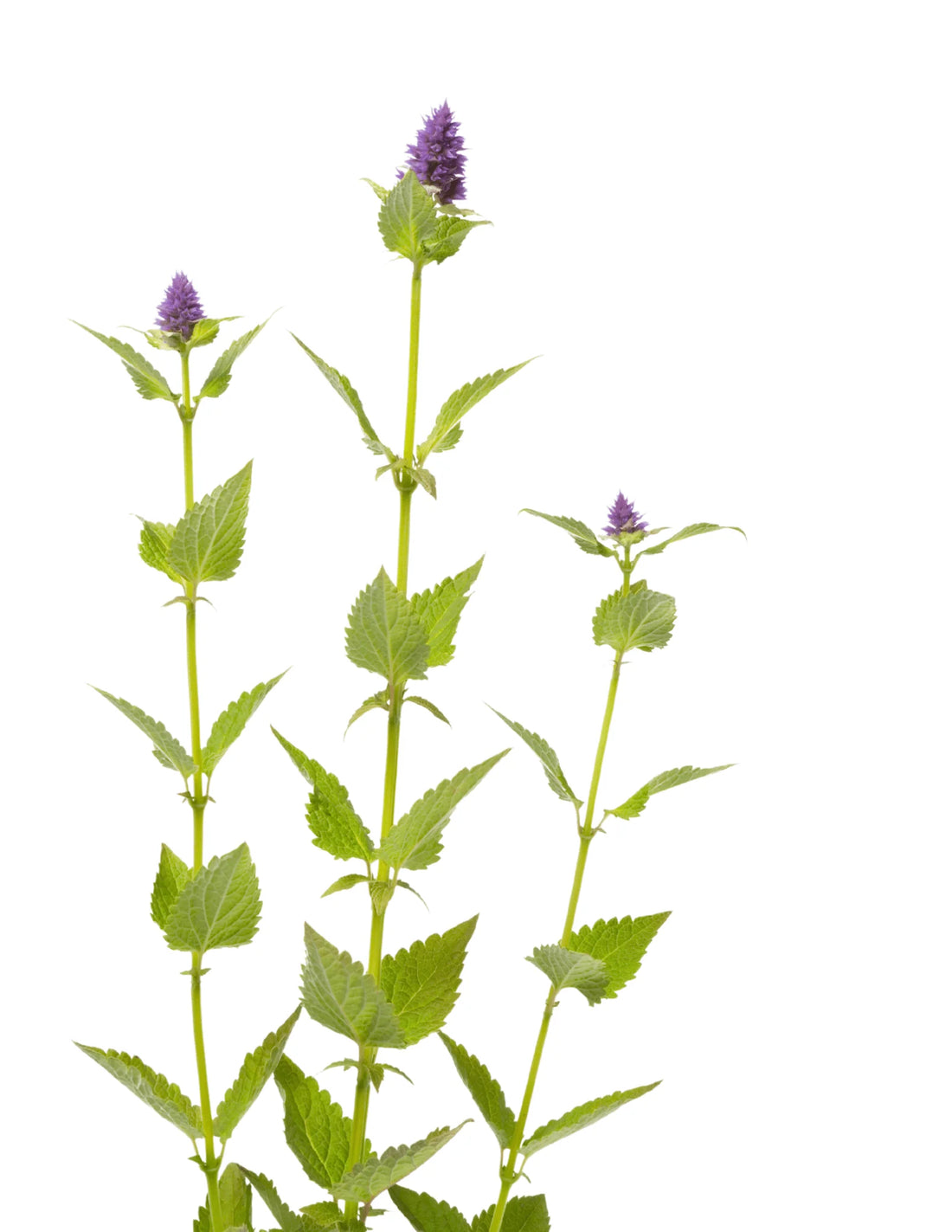Anise Hyssop - Agastache foeniculum seeds
Organic Open-Pollinated Non-GMO Anise Hyssop Seeds
Used as early as the 7th century to improve the smell of kitchens and hospitals. Hyssop leaves are used to flavor salads, soups, liqueurs, and stews. Essential oil used in perfumes. Attracts bees, butterflies, and hummingbirds. Plants grow 18-24".
A gorgeous upright, perennial that brings beauty to the garden, nectar to the bees and an abundance of uses in the kitchen.
With an anise-like scent it has long been used among the Native Americans in herbal medicine.
Used as a dried tea, fresh in salads, as an infusion and many more uses. Known to be one of the first spring flowers, once plant is established!
Excellent as a border flower or as an accent to any herbal garden. Easily self-seeds. Aside from being beautiful, they are nectar rich and offer forage for many of our pollinator allies like bees, butterflies and hummingbirds!
This variety works for:
- Fresh eating
Hyssop has a strong, almost bitter flavor so it can be used sparingly in salads or soups. The flowers are often used to help scent a room the essential oil extracted from the plant is one of the many herbs and flowers used in the production of the famous French "Chartreuse" liquor.
- Organic
- Non-GMO
- Perennial
- Sun: Full
- Native
- Attracts : Bees, butterflies and hummingbirds
- Deer Resistant
- Drought Tolerant
- Neonicotinoid-free
Growing Tips:
Keep soil moist while seeds are germinating. Resilient and beautiful, this wildflower will thrive in a prepared seed bed, loosened and weed-free.
If starting seeds indoors, it is key that your new starts be hardened off. This is a process that requires taking them outside during the day, for a period of time, before they are planted. This acclimates your seedlings to the outside world, meaning the elements like the wind and sun. We do it for several weeks to a month as this strengthens their stems and overall plant structure.
- Start for a short period of time initially, then graduate to more time each day
- One week minimum is recommended
- Bring them inside in the early evening and overnight
- Keep an eye on them and constantly water them. Make sure they have not blown over.
This content type will accept rich text to help with adding styles and links to additional pages or content. Use this to add supplementary information to help your buyers.
You can use product metafields to assign content to this tab that is unique to an individual product. Use tabs to highlight unique features, sizing information, or other sales information.
Organic Open-Pollinated Non-GMO Anise Hyssop Seeds
Used as early as the 7th century to improve the smell of kitchens and hospitals. Hyssop leaves are used to flavor salads, soups, liqueurs, and stews. Essential oil used in perfumes. Attracts bees, butterflies, and hummingbirds. Plants grow 18-24".
A gorgeous upright, perennial that brings beauty to the garden, nectar to the bees and an abundance of uses in the kitchen.
With an anise-like scent it has long been used among the Native Americans in herbal medicine.
Used as a dried tea, fresh in salads, as an infusion and many more uses. Known to be one of the first spring flowers, once plant is established!
Excellent as a border flower or as an accent to any herbal garden. Easily self-seeds. Aside from being beautiful, they are nectar rich and offer forage for many of our pollinator allies like bees, butterflies and hummingbirds!
This variety works for:
- Fresh eating
Hyssop has a strong, almost bitter flavor so it can be used sparingly in salads or soups. The flowers are often used to help scent a room the essential oil extracted from the plant is one of the many herbs and flowers used in the production of the famous French "Chartreuse" liquor.
- Organic
- Non-GMO
- Perennial
- Sun: Full
- Native
- Attracts : Bees, butterflies and hummingbirds
- Deer Resistant
- Drought Tolerant
- Neonicotinoid-free
Growing Tips:
Keep soil moist while seeds are germinating. Resilient and beautiful, this wildflower will thrive in a prepared seed bed, loosened and weed-free.
If starting seeds indoors, it is key that your new starts be hardened off. This is a process that requires taking them outside during the day, for a period of time, before they are planted. This acclimates your seedlings to the outside world, meaning the elements like the wind and sun. We do it for several weeks to a month as this strengthens their stems and overall plant structure.
- Start for a short period of time initially, then graduate to more time each day
- One week minimum is recommended
- Bring them inside in the early evening and overnight
- Keep an eye on them and constantly water them. Make sure they have not blown over.

